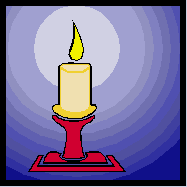
It is only on entering the complex that one's initial reaction takes a swing in the opposite direction.
As my tour group passed through the main camp gate we read the words: Arbeit Macht Frei (Work Makes Free). It was pointed out to us that the B was upside down. The prisoners had made the sign, so they flawed it the only way they could. Inverting the B was their way of saying to others: "This is not correct. Do not believe the words you read."
A large sign in the first block read:
This is not a sanatorium, but a German concentration camp. There is
only one exit: Through the crematorium chimney. Jews may live for two
weeks. Priests for one month. The rest for three months.
Camp Manager,
Karl Fritsch
The corridors were lined with photographs--hundreds of emotionless faces staring out at visitors like you and me.
Some had flowers hung above their frames. One lady on the tour saw a photograph of a man who was killed on the day she was born. She wrote his name in her diary.
Block after block, face after face we passed until we entered Block II, the Death Block. It was here in Cell 18 that Father Rajmond Kolbe died of starvation after giving his life voluntarily so that another might live.
The basement cells were small, cramped, dark and damp. The corridors only wide enough for one person to pass at a time. The group moved through and was gone.
I was the last in line. I heard singing rise from a basement cell. So I returned to investigate. The door to the cell had been boarded up. It was a strange sensation.
Certain I was having a spiritual experience, I lingered a little to absorb the beautiful sadness of the voices.
It wasn't long before I realised that I was completely alone in the basement of the Death Block. This was not a great place to find myself alone, even in 1994. I hurried in search of the group.
Emerging from Block II, I sensed the cold darkness that had crept in, surrounding my very being.
I also discovered the source of the soulful singing--a collection of people, their faces focussed on the Black Wall, the Wall of Death. Candles were lit and flowers placed at the base of the wall where so many were executed, mainly Poles, members of the resistance, hostages and civilians.
By 5:30pm darkness reigned. We were ushered along, barely able to see with the only light being from a distant watch tower. We had an elderly Catholic priest with us who stumbled on the uneven ground. Many people helped others along. This somehow made it all so much more real.
We were lead to a room, cold, concrete and poorly lit. Our guides made sure everyone was inside before telling us we were in the first temporary gas chamber. Whispers broke out among us as we raised our eyes to the square vents through which gas once poured into the room.
We were most obliging when asked to move along to the next room. I was free and alive and walking into Crematorium I and I felt nauseous.
I only spent three hours at Auschwitz. Some spent three days, three weeks, even three years. I felt I carried a weight out of there I didn't have when I walked in.
Copyright (c) 1994 Liesha Northover